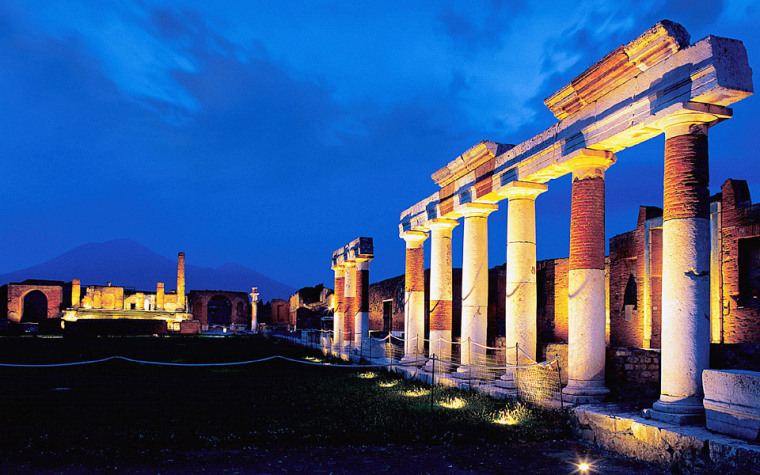We all know the infamous story of the eruption of Mount Vesuvius in A.D. 79 that buried the city of Pompeii and killed thousands of people.
What we don't know is how exactly they died. There is only one historical witness account of what happened in 79 A.D. on Aug. 24. From afar, Pliny the Younger reported watching his uncle succumb to a cloud of ash and smoke.
Historians interpreted this to mean that the victims from Pompeii, Herculaneum and Oplontis were not crushed from flying rocks or buried underneath collapsing buildings, but that they died from suffocation due to a lethal cocktail of ash and volcanic gas. And until now, no one had bothered to challenge that interpretation.
A new study, led by vulcanologist Giuseppe Mastrolorenzo from the Naples Observatory in Italy, shows that the residents killed in Pompeii and the neighboring towns located on the slopes of the volcano died from an extreme heat surge produced by the volcano, not suffocation.
"Everything that has been written in the guides, and the texts, and that has been retold to tourists is false," Mastrolorenzo told GlobalPost.
Mastrolorenzo points to the piles of human remains as his leading evidence.
Hundreds of bodies were recovered from the three main cities devastated by the eruption. Around three quarters of the remains reflect people who were killed instantaneously, their bodies suspended in action.
Victims of suffocation, in contrast, are generally found in floppy or sleepy positions, crumpled on the floor.
The researchers tested their theory by exposing a set of recent animals and human bones to different levels of heat, ranging from 100 to 800 degrees Fahrenheit.
Based on the coloration of the experimental bones, they concluded that the bodies in Pompeii, 6.2 miles from the volcano, were likely exposed to temperatures of between 250 and 300 degrees Fahrenheit. Bodies recovered from towns closer to the eruption were exposed to much higher temperatures, probably 450 to 500 degrees Fahrenheit, according to the team's study, which appeared recently in the journal PLoS One.
Using this information, the team modeled temperature gradients of the six major flows of hot ash columns that plowed down the side of the mountain during the eruption. The results suggest a much wider area around the volcano can be subjected to lethal temperatures than previously thought.
Mastrolorenzo believes the victims of Pompeii were killed during a single heat surge from the fourth pyroclastic surge. A few seconds' exposure to the intense heat was enough to kill the villagers immediately. Being inside provided no shelter.
The blazing heat wave could have traveled up to 12.4 miles from the volcano. Taking this into account, the current plan to evacuate a five-mile radius around in the event of another eruption seems entirely insufficient. The city of Naples sits outside this zone, for example, but it is only 6.2 miles away.
Potentially more than 3 million people are at risk if Mount Vesuvius explodes in a similar fashion to the one that wiped out Pompeii.
